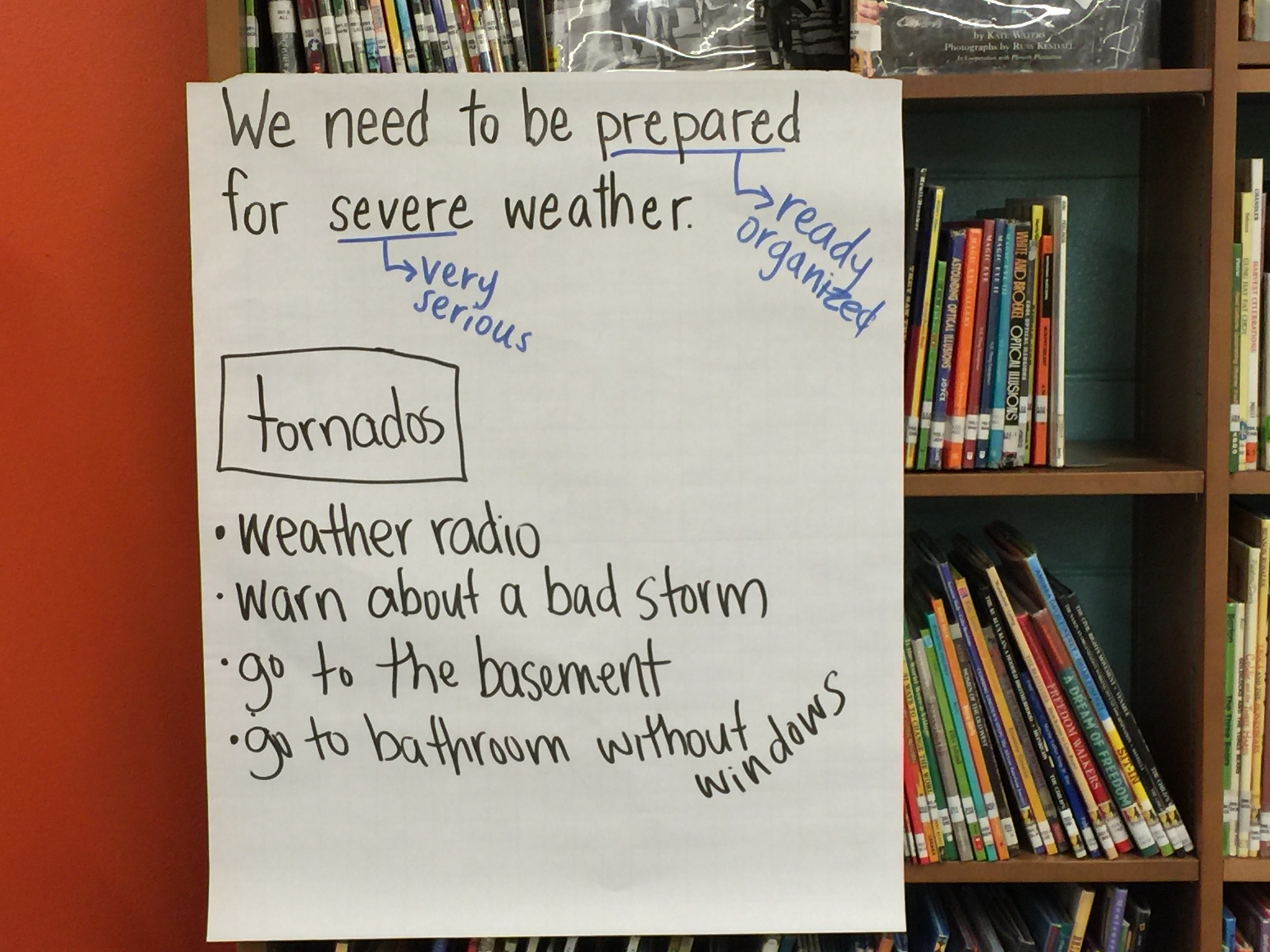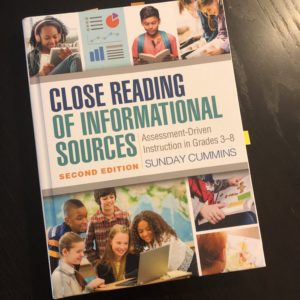
Do your students struggle with determining what is important when reading informational texts? Are they unsure of what to underline and annotate? I remember one fifth grade student saying, “Well, I underlined the whole text because it was all important!”
What follows are suggestions for introducing this analogy during a Phase 2 Meet the Strategies lesson. (Reminder: During Phase 1 Meet the Source, introduce the text and let students read as best they can. Confer with individuals as they read. During Phase 2 , you closely read an excerpt practicing strategic reading. During Phase 3 Meet the Response, students write about what they learned during Phase 2. Learn more about the three-phase plan at this link.)
1. Make sure there’s a VERY CLEAR PURPOSE for reading & determining what is important.
Some sample purposes –
Purposes Related to Specific Content
- How was the scientist Norman Borlaug innovative? Why was this important?
- What have we learned about Titan, one of Saturn’s moons, that we never knew before? Why might this information be “exciting” as the author states?
- Why might we consider Mary Fields extraordinary?
- How should we be prepared for severe weather? Why?
Purposes Related to Skill Building
- What is the author’s purpose in this text? What details in the text make you think so?
- What is the author’s main idea? What details in the text support this main idea? (Okay…as clear as this one is, it’s still hard. You might consider liberating your students by providing the main idea – see my recent blog entry on this.)
2. Introduce the pasta analogy, model & gradually release responsibility.

This is a quick introduction that leads into your think aloud:
Have you ever made pasta before? (Pause. Students nod their heads.) So to make pasta you have to boil it in water until it’s soft, correct? (Heads nod.) And then you eat the pasta, correct? (Usually, students continue nodding their heads.) Wait! Don’t you have to drain the water first? You don’t want to eat the pasta with the water, right? (Students shake their heads emphatically.) The pasta is what’s important to eat and digest, not the water. It’s the same way when you are reading to determine what’s important. There are pasta words or phrases that we want to eat and digest and then there are water words that are less important.
You can figure out what words or phrases are pasta by thinking about your purpose for reading. Today we are reading to find out how the scientist Norman Borlaug was innovative. Remember innovative means to introduce or use new methods or a new idea. So we are only reading to locate details—or pasta words & phrases—that help us understand how Borlaug was innovative. Let me show you how I determined what was important in the first sentence of this excerpt.
After you model, ask students to take more of the responsibility, stopping after each sentence to think:
Are there any pasta words in this sentence or words that help me respond to my purpose for reading?
Prompt students to think about the purpose as you confer with individuals:
What are you learning that might help you understand how Norman Borlaug was innovative? What are pasta words or phrases in this sentence that might help you?
Close by asking: What did you learn about ____? What did you do to read strategically?
Below are artifacts from lessons I’ve given.

The image above is of a 5th grade student’s annotated text when locating “pasta” or details that helped him/her think about how Norman Borlaug was innovative (purpose). With a small group, we did the first paragraph or so together. Stopping after each sentence and thinking about what we might underline and why as well as what we might write in our annotation and why.

For the image above, 2nd grade students read a text about severe weather. One of the main ideas in this text was that we need to be prepared for severe weather. We identified pasta or key details related to this main idea–in just one paragraph of the text (about tornados). Together, sentence by sentence, we identified the key words and I wrote them on the chart paper.
Then for guided practice, each student read another paragraph (different section of the book on blizzards) and identified “pasta” or words that helped them think about how to prepare for blizzards. The image below is one student’s “pasta” notes taken during guided practice.

These 2nd grade students used their list of key words/phrases to summarize their learn and then before they wrote a response, to orally rehearse what they’d write (a sentence at a time).
WARNING: At first, this may take a lot of guidance on your part. I recommend doing this with short chunks of text, sentence by sentence. Think aloud together with students.

If you want to read more, check out Chapter 8 “Identifying and Explaining Key Details” in my book Close Reading of Informational Texts. I provide sample lessons and suggestions for follow-up lessons.
Hope this helps.
Sunday
